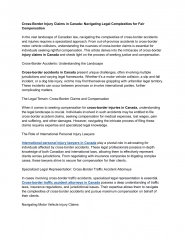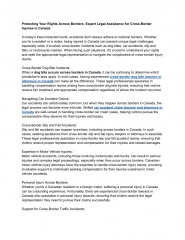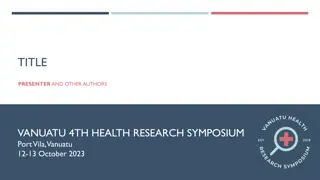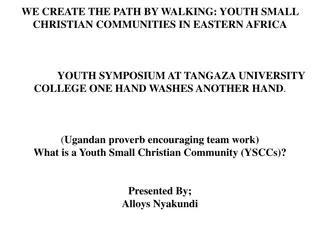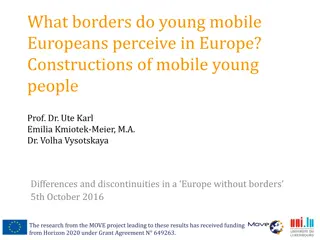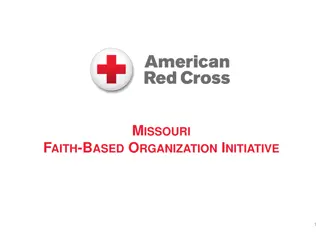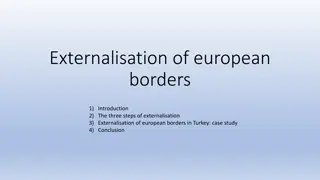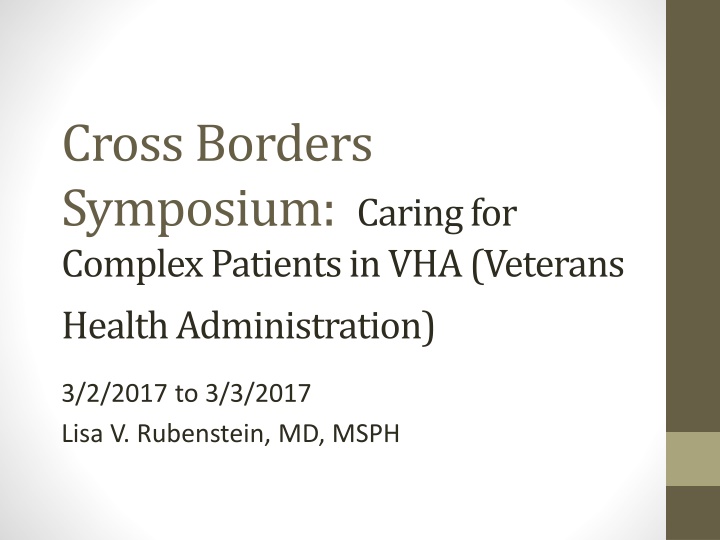
Innovative Strategies for Managing High-Risk Patients in Veterans Healthcare
Explore how the Veterans Health Administration tackles the challenge of caring for complex patients through initiatives like Hot Spotter Programs and the use of predictive tools like CAN scores. Learn how special population PACTs cater to diverse groups of veterans, ensuring targeted and effective primary care services.
Download Presentation

Please find below an Image/Link to download the presentation.
The content on the website is provided AS IS for your information and personal use only. It may not be sold, licensed, or shared on other websites without obtaining consent from the author. If you encounter any issues during the download, it is possible that the publisher has removed the file from their server.
You are allowed to download the files provided on this website for personal or commercial use, subject to the condition that they are used lawfully. All files are the property of their respective owners.
The content on the website is provided AS IS for your information and personal use only. It may not be sold, licensed, or shared on other websites without obtaining consent from the author.
E N D
Presentation Transcript
Cross Borders Symposium: Caring for Complex Patients in VHA (Veterans Health Administration) 3/2/2017 to 3/3/2017 Lisa V. Rubenstein, MD, MSPH
Hot Spotter Initiatives We focus here on a VHA hot spot, how VHA chose to focus on it, and what we learned 5% of patients account for almost half of VHA healthcare costs (VHA and non- VHA), mostly from hospitalizations Hot Spotter concept popularized by Atul Gwande, 2011, New Yorker In Camden, New Jersey, 1% of patients account for 1/3 of medical costs. Photograph by Phillip Toledano
Rationale For a Focus On a Hot Spot: High Risk Patients In VHA Primary Care VHA primary care is provided using the patient centered medical home (PCMH) model; VHA s PCMH is called patient aligned care teams or PACT VHA can identify high risk patients, i.e. those at high risk of acute care use (ED or hospital) High risk patients are predominantly cared for in general PACT
VHA can predict Veterans risk for hospitalization using the Care Assessment Need (CAN) score 20% of Patients with CAN 95 will be hospitalized within 90 days 34 35 30 25 22 % hospitalized 20 17 1213 15 10 5 0 <5 5 10 15 20 25 30 35 40 45 50 55 60 65 70 75 80 85 90 95 96 97 98 99 Risk for 90-day hospitalization in percentile From Wang, et al. Med Care. 2013.
Where do Veterans with high CAN scores receive primary care in VHA? Renal/Dialysis Infectious Disease Homeless Geriatrics Women s Health Home Based Primary Care Serious Mental Illness Post HIV Primary Care Deployment
Special Population PACTs Provide primary care to e.g., elderly, HIV, women Veterans, homeless, and others Have smaller panel sizes and special or extra staffing compared to general PACT Are supplemented by telehealth resources for primary care (not shown)
Most Veterans With CAN 95 Are Cared For In General PACT PACT assignment for high-risk patients during September 2015 across VHA nationally (last 4 weeks of FY15) 2%1%3%2% 4% General PACT WH-PACT Geri-PACT H-PACT 88% HBPC Other
Most High Risk Patients Are Not Cared For In Specialized PACTs Even When Eligible PACT assignment for CAN > 95 patients during Sept. 2015 (VHA national data last 4 wks. of FY15) Homeless patients CAN 95 (n=52,507) 95% in PACT 5% of High Risk Homeless are in Homeless PACT Patients > 70 yo CAN 95 (n=98,182) 94% in PACT 6% of High Risk 70+ yr olds Are In Geriatrics PACT HIV patients with CAN 95 (n=5,582) 49% in PACT 51% of High Risk HIV Patients Are In HIV PACT 0% 10% 20% 30% 40% % of Veterans 50% 60% 70% 80% 90% 100%
Special Population Pacts Have Higher Proportions Of High-risk Patients PACT assignment for high-risk patients during September 2015 across VHA nationally (last 4 weeks of FY15) 7.8% General PACT (n=3,958,057) (n=308728) WH-PACT (n=219,091) 7.3% PD-PACT (n=58,668) 5.1% Geri-PACT (n=35,345) 18.2% HBPC (n=20,052) 40.6% SCI-PACT (n=10,608) 26.9% ID-PACT (n=10,482) 28.2% H-PACT (n=9,940) 27.9% (n=2773) % of Veterans who have CAN 95
Reasons PACT Providers Struggle With High Risk Patients Difficulty managing patients with MH problems Poor patient self-management Patients with psychosocial and behavioral issues, learning deficits Overly dependent and demanding pts Lack of timely response from specialists Unclear primary and specialty care responsibilities Problems with coordination and communication Insufficient staffing, resources for care coordination Poor communication with specialists for co-managed patients Difficulty coordinating care across multiple clinics, providers, and services Lack of control over my schedule Lack of support from local leadership 0% 5% 10% 15% 20% 25% 30% 35% 40% 45% From PACT provider/nurse survey, 2015
High Risk Patient Impacts on PACT and Care Models for Improving Their Outcomes Managing high-need patients while accountable for all primary care patients strains PACT teams and puts these vulnerable patients at risk High risk patient care can impede general patient access Some care models reduce high risk patient hospitalization in particular contexts, but often do not have a PCMH/PACT environment (e.g., Brenner et al; patients w/o established primary care access) Positive results from some studies may be explained by regression to the mean
A Potential Pitfall If No Comparison (Zulman et al, from ImPACT, a pilot intensive management program, early results)* 25% decrease in cost/patient! 24% decrease in cost/patient! *Zulman et al, JAMA Int Med, 2017, final results 11-Month Person-Level Costs
Decision to Initiate PACT Intensive Management Demonstration Policymakers faced choice of either: 1) Broadly implementing a promising intervention from non-VA setting but not tested in VA Potential risks of high cost, insufficient implementation 2) Gathering VA-specific data through a rigorous QI demonstration initiative Test concepts, barriers/facilitators, care processes & outcomes Even if negative, learn about VA high risk patients, their needs, their impacts on the care system, and develop helpful management tools and approaches
PIM Demonstration Request for Proposal (RFP) RFP required Interdisciplinary intensive management team Evidence basis Use of CAN score to identify high-risk patients Willingness to participate in rigorous evaluation Evaluation Naturalistic, quality improvement focus Mixed methods, but primary outcome of hospitalization High risk patients randomized to be invited to participate Patient lists sent to sites to screen, triage
PACT Intensive Management (PIM) Selected Sites (5 selected out of 39 applicants, 2013) Milwaukee VAMC Cleveland VAMC and CBOC San Francisco VAMC and 2 CBOCs Salisbury VAMC Atlanta CBOC
Each sites PIM had distinct features Mental Health San Francisco GRACE Telehealth Atlanta Adjunct to PACT Camden Cleveland Transitions in Care PIM Milwaukee Separate PACT team Salisbury
No Significant Effect of PIM on Rates of Acute Care after 12 Months 3.5 # of acute care visits per patient 3 2.5 over 12 months 2 PIM-Baseline PIM-12-mo F/U 1.5 PACT- Baseline 1 PACT-12-mo F/U 0.5 0 All-cause Hosp ACSC Hosp Total ED visits ACSC * ED visits ACSC = Ambulatory Care Sensitive Condition Note: Data includes VHA and fee-basis hospitalizations
PIM Had Positive Effect on Trust; Trends Toward Improved Access & Coordination Got needed services Ease in getting care PIM Easily accessible provider PACT Respect from provider Have a trusted provider * P = 0.03 Help with coordination of care 0% 10% 20% 30% 40% 50% 60% 70% Strongly Agree Source: 2016 Survey of High-Risk PIM and PACT Patients (N = 1527)
Some of What We Learned Primary care is where most high risk patients receive care PCMH/PACT is a high bar for improvement No magic bullet to reduce hospitalization especially among pts with access to comprehensive primary care Approaches to high risk patient care will need to leverage or support general primary care Primary care providers perceive stress related to caring for high risk patients Reducing provider/staff burnout may be an important goal
What We Learned (cont.) Mental health specialist support was crucial 50% of highest risk VHA patients have a mental health diagnosis Social worker role crucial for high risk pts Home situations, resource needs Legal issues Behavioral issues RNs, LVNs and clerks were crucial for Care coordination (the single biggest PIM workload) Health coaching for chronic diseases Medication and equipment support
What We Learned (cont.) Unmet patient needs interact with PACT sufficiency; primary care can meet most needs if: Adequately staffed for care coordination Supported by specialists when needed Communication modalities are working Primary care most needs support for Achieving patient engagement, trust, adherence Home visit & psychosocial assessments Bridging to other resources, e.g. home based primary care, palliative care, geriatrics Care coordination during phases of acute pt. need
Acknowledgements Members of PIM Initiative PIM Demonstration sites PIM Executive Committee: Gordon Schectman, David Atkins, Carrie Patton, Belinda Black (Velazquez) PIM National Evaluation Committee Lisa Rubenstein (CSHIIP, Los Angeles) Steve Asch (Ci2i, Palo Alto) Evelyn Chang (CSHIIP, Los Angeles) Donna Zulman (Ci2i, Palo Alto) Jean Yoon(HERC, Palo Alto) Michael Ong (CSHIIP, Los Angeles) Susan Stockdale (CSHIIP, Los Angeles) Marian Katz (CSHIIP, Los Angeles) Elvira Jimenez (CSHIIP, Los Angeles) Mingming Wang (CSHIIP, Los Angeles) Ava Wong (PIM NEC, VA Palo Alto) Angel Park (HERC, Palo Alto) Karen Chu (CSHIIP, Los Angeles) Andrew Lanto (CSHIIP, Los Angeles) Shoutzu Lin (Ci2i, Palo Alto) Cindie Slightam/Terri Rogers (ImPACT, Palo Alto) Alissa Simon (CSHIIP, Los Angeles) Debbie Delevan (CSHIIP, Los Angeles) Lisa Tarr (CSHIIP, Los Angeles)

